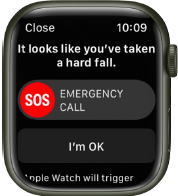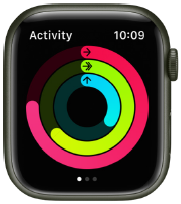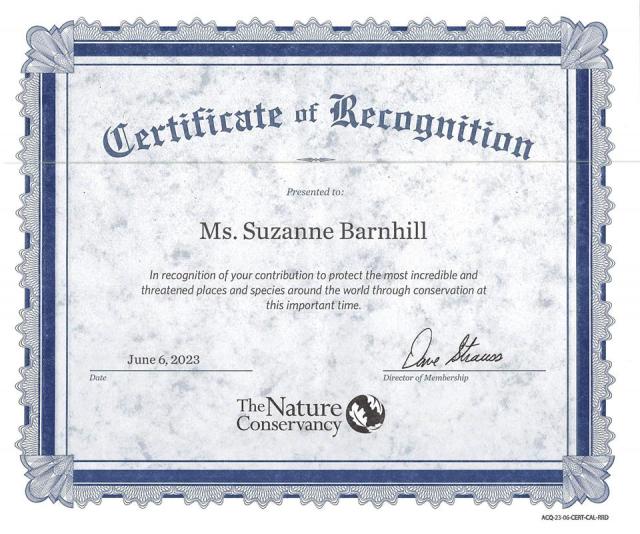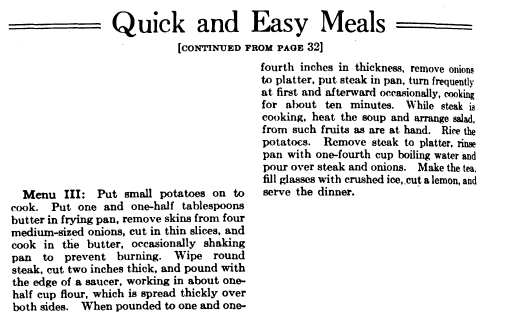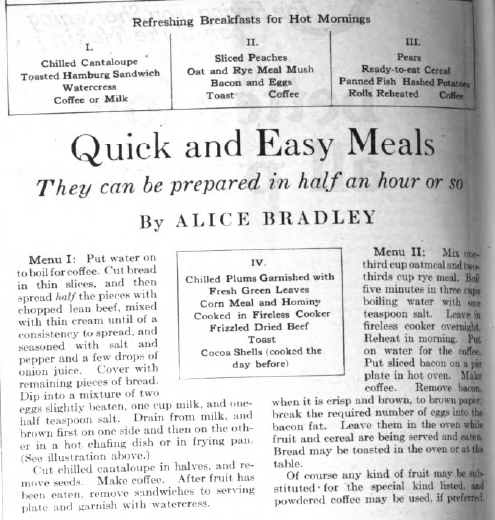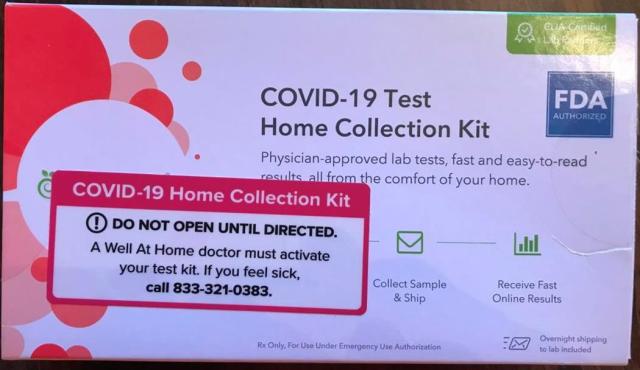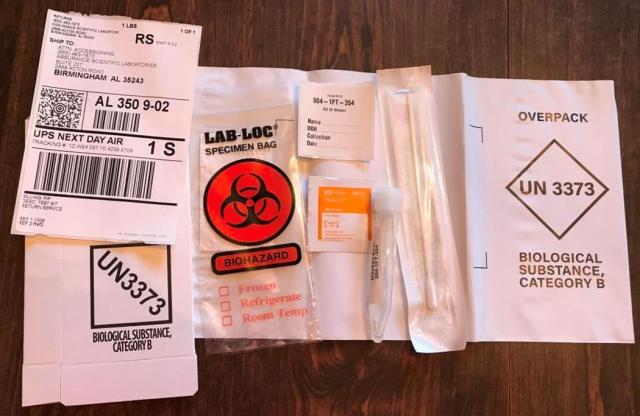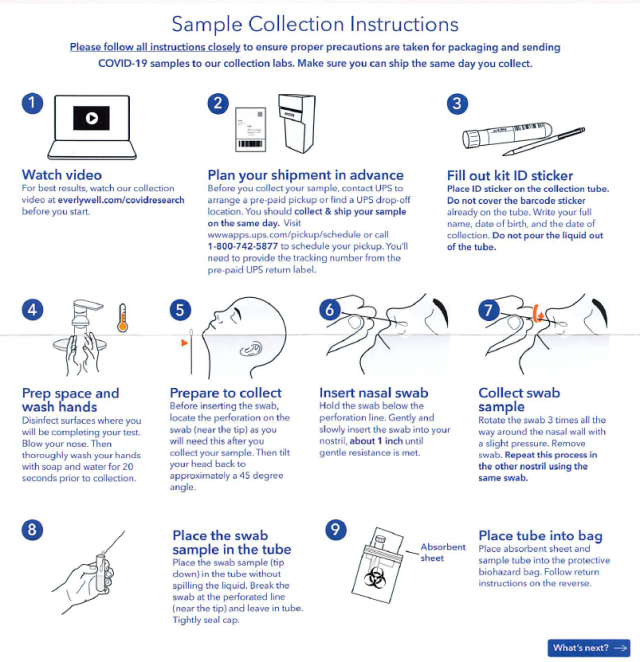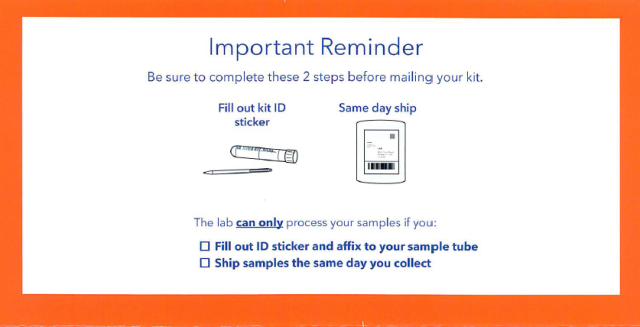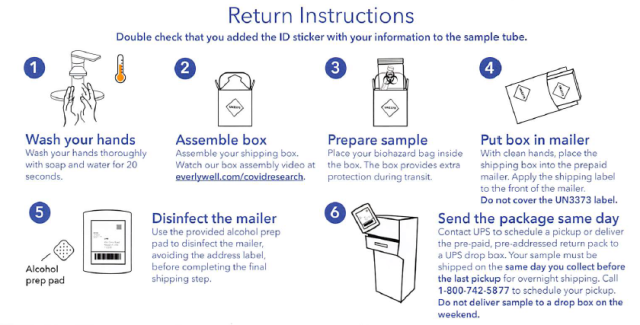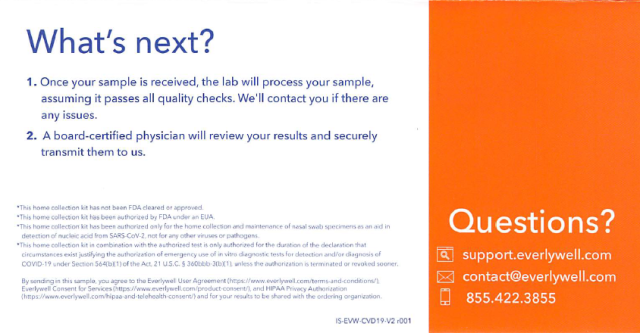I have had a streak of bad luck with jewelry: losing it, breaking it, and other mishaps—quite aside from having an accumulation of costume jewelry purchased to match outfits I no longer own!
The first real disaster I recall took place in 2008. Our daughter and her husband were living in England, and we visited there in March. She had devised an ambitious itinerary for us, including visits to London to sample some galleries, walk along the Thames, and conclude with a performance of Wicked; to Edinburgh by train (with a stopover in York); to Dover to tour the castle; back to London for Westminster Abbey and the British Museum; to Windsor and Eton; and, on the penultimate day of our visit, Stonehenge and Oxford. My travelogue records:
The morning dawned sunny, but clouds soon began to gather. Our planned 9:00 departure time slipped to 10:00, and when we arrived at Stonehenge a little before noon, it was raining noticeably, and it didn’t cheer us to hear that an hour earlier it had been “beautiful.”
I suspect that Stonehenge would have been a disappointment no matter when we went, but this was really the worst possible experience:
As we left the sheltered parking lot and crossed the road to the open plain, the rain and especially the wind picked up considerably. In fact, [my husband] commented that he had been out of doors during Hurricane Katrina and hadn’t been assailed as we were there on Salisbury plain. Between the rain and the gale-force winds, I found it impossible to enjoy or appreciate the monument. The wind made an umbrella useless—more a nuisance and a hindrance than a help—and even if it hadn’t kept turning inside out, the noise of the umbrella being buffeted by the wind made it even more impossible to hear the audio guide, which had to be inserted inside my knit cap to be heard.
From Stonehenge we went on to Oxford and saw the sights, attended choral evensong in Christ Church Cathedral, and had supper at the Eagle & Child pub (popularly known as the Bird & Baby), famous for being a hangout of C. S. Lewis, J. R. R. Tolkien, and other Inklings. It was on this day that the disaster occurred:
The only real downside to the day was that I discovered (while we were sitting in Christ Church Cathedral) that I had lost an earring from one of my favorite pairs, undoubtedly when I was struggling with the audio guide at Stonehenge. I’d had the momentary thought that I should remove the earring in order to hear better; in retrospect, I wished I had acted on that thought.
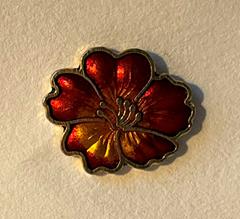
I had bought these earrings for $4.00 (!) at the Chinese pavilion at Epcot in 1992 and loved wearing them with my many dark red dresses. I have never been able to find a comparable pair or even any suitable replacement.
Obviously, my mistake was in wearing earrings under a hat. But it seems I hadn’t learned my lesson because in 2015, I wore a favorite pair of poinsettia earrings in a Christmas parade, wearing a Santa hat. When I got home, I found I was missing one of the earrings.
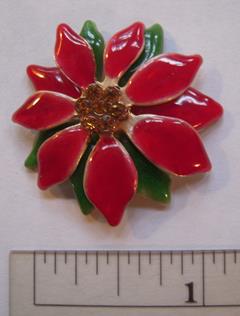
I was eventually able to find a comparable pair online. They had clips rather than posts, but I bought them anyway, pulled the clip off the back of one, and glued on a post. The substitute earring doesn’t sit quite the same, though, so I’ve never been satisfied with them.
The latest loss was surprisingly devastating. I had bought this new purse:

It is a very capacious bag, with more pockets, both open and zipper, than I know what to do with, including one zipper pocket inside. The problem was that the two sides were identical: there was no front or back. In order to keep track of what things were in what pockets, I really needed to know which side was which, so I hit on the idea of pinning some sort of brooch to one side that would become the designated front.
My first thought was to stick on a cheap lapel pin I’d recently received (Rotary annual theme pin), but I couldn’t find it, so I excavated my jewelry box and found an amazing silver brooch that I had no memory of. It was in the form of a scimitar and scabbard. The scabbard was filigree, and the removable scimitar was attached by a fine chain. If you google for “silver scimitar brooch,” you will find that this is a very common vintage item, and this one is similar to mine.
The reason I know this is that, several days after pinning the brooch on the “front” of the bag, I realized it was missing. I backtracked to all the places I’d been—gym, library, Walmart—but had little hope that it would have turned up. At Walmart I was told plainly that anything that small would doubtless have just been swept up. It annoyed me that I didn’t even have a photo of it, and the only reason I had a reasonably clear memory of what it looked like was that I had polished it before pinning it on.
I mourned the loss quite heavily. This seemed unreasonable since it was an item I hadn’t even known I had (I assume a gift or legacy from one of my grandmothers), but it was so cool, and I had found it so clever, that it was hard to adopt an attitude of “Easy come, easy go.”
This all happened in early October. On December 5, as my husband and I were returning from the Christmas tree farm, he happened to look down as he went through the screen door to the back porch. There, in a crevice in the concrete floor, was a surprise!

Not surprisingly, it was pretty mashed and bent and scratched, having undoubtedly been stepped on numerous times (it had probably been covered by the doormat, which would explain why it hadn’t been seen before).
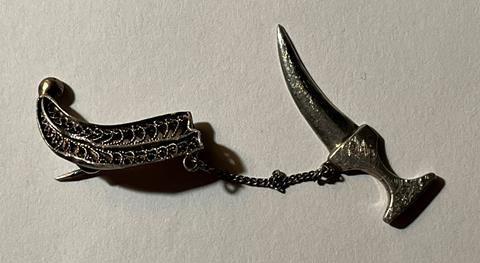
I’ve been able to repair it slightly, but we are hopeful that a friend who has a hobby of silversmithing may be able to do a better job, the object being to make it possible to completely insert the scimitar in the scabbard again.
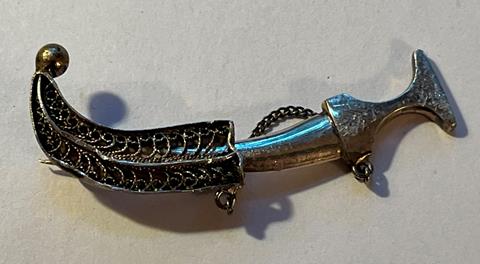
It’s not an entirely happy ending, but I’m just so pleased to have it back so that at least my memory of its beauty is restored!

